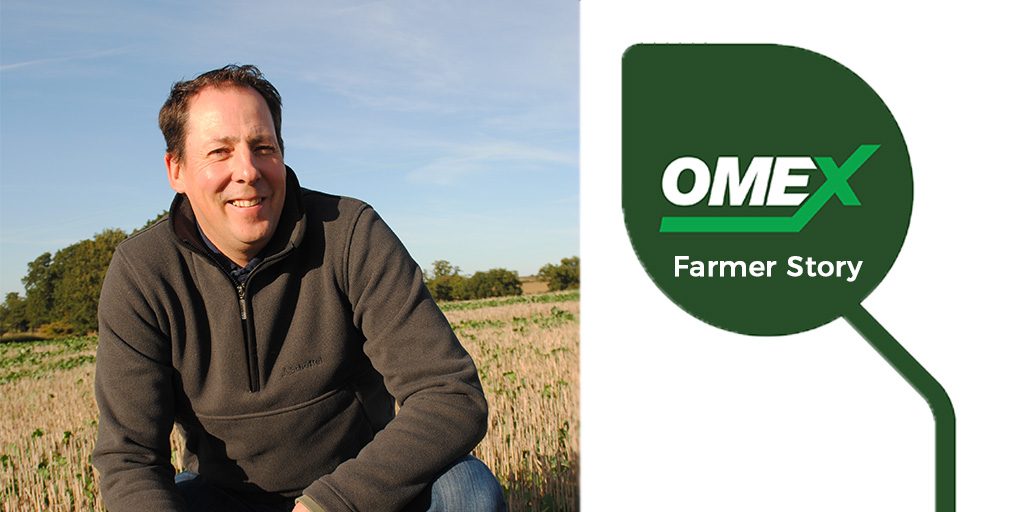In the last 30 years D S King and Son’s, Pasture Hill Farm, Bourne in Lincolnshire has adapted its business to keep pace of an increasingly challenging industry, helping to secure a sustainable farming future.
Traditionally a plough-based cultivation regime, the farm switched to a minimum tillage system and moved away from granular fertiliser to
liquid solutions and suspensions, in an effort to drive down input costs while maintaining profitability and improving the
environmental footprint.
The business currently runs to 688ha of tenanted and contract farmed land and supports a rotation based on milling, feed and seed quality wheat, winter feed barley, oilseed rape, winter beans, linseed and spring oats. Wheat is grown on a two year rotation and yields average 9.5t/ha.
“Liquid rather than granular fertiliser have been used on the farm for decades due to its improved accuracy, better environmental profile, convenience and better health and safety implications compared to a granular fertiliser alternative,” says Daniel King. “It has had a huge impact on our business performance over the years.”
OMEX
liquid fertilisers are delivered from Bardney in Lincolnshire and pumped directly into the farm’s two strategically positioned 50t bunded tanks.
“A key advantage of liquid fertiliser is that there is no risk to our employees unloading heavy bags or filling the spreader,” he says. “We also don’t have to worry about storing bags under cover, which frees up valuable space for crops and machinery.
“With fewer pesticides in the product armoury we have had to extend our rotation and introduce a wider variety of crops. This means we have to be able to store these crops after harvest so space is at a premium.
“Granular fertiliser can be applied up to 24m but there is always going to be over and under lapping, especially on the headlands,” he explains. “With all farmers now having to be more environmentally aware, liquid fertiliser fits the profile perfectly and in my opinion is really the only option for farming’s future.”
He adds that with a liquid system being so much more accurate, it presents an excellent opportunity to reduce inputs without compromising yield and quality.
“Our fertiliser inputs have definitely reduced although we wouldn’t claim yields have gone up since switching from granular to liquids, but certainly grain samples are more consistent and our fields are more uniform.
Mr King says that much of his farm is flanked by the East Glen River so fertiliser application has to be accurate to avoid contamination of water courses.
“We have at least 2.5 miles of river frontage and the nature of granular application means we wouldn’t be able to avoid throwing some of it in the river,” he explains. “The only way to avoid that from happening on a granular system is to have wider grass margins and reduce the rates on the headlands.”
Mr King adds that UK growers have to take the environmental issues very seriously and the responsible use of fertiliser is key. “We do not want to see UK agriculture adopt a similar attitude towards fertiliser use as Denmark, which is to have cut rates by 50%.
“Labour availability is also an increasing challenge for us,” he says. “It’s expensive and in short supply so we have to find ways to reduce our dependency on it. Fertilising has always been a labour heavy operation that often falls at busy times of the year. A granular application system could typically need up to three people to operate efficiently, compared to a liquid system where only one person is really needed, unless a bowser is employed too.”
Mr King has made a strategic decision to add another two fully bunded 50t liquid fertiliser tanks over the autumn. This will reduce dependency on a bowser which is used to support the sprayer on outlying land.
A key reason for switching to OMEX liquid fertiliser originally was the large portfolio of products available. All fields are treated with
Nitroflo 26% + 5% SO
3.
“All our crops need
sulphur,” says Mr King. “And everything – including pesticides – is applied through our 36m Chafer Sentry sprayer. We can keep spraying in windy conditions without compromising accuracy, which means we are in charge of the operation rather than being dictated to by the weather. We can easily be covering over 10,000ha a year with our sprayer.”
Mr King fills his liquid fertiliser tanks up in the autumn when prices are most competitive and there is less pressure on delivery. Tanks can be topped up in season, normally within 48 hours of calling OMEX’s Bardney facility.
“It only takes a few minutes to fill the sprayer with one man and the sprayer can cover 25ha per fill up,” he explains.
The farm has also benefitted from applying
OMEX suspension fertiliser, which is competitively priced against TSP and because it is delivered to the farm in tankers and spread using a dedicated contractor there is no hassle and very low management involvement.
“OMEX carry out
soil sampling and a bespoke suspension fertiliser mix is applied to stubbles or cultivated land,” says Mr King. “We don’t have time or labour available to apply TSP in the autumn.”
Want to find out more about how Liquid Fertilisers can work towards a sustainable future for farming? Speak to your local FACTs qualified agronomist,
here.
